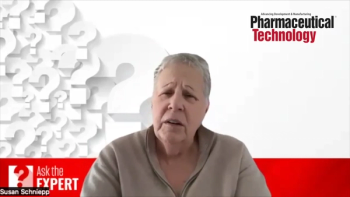
- BioPharm International-10-01-2018
- Volume 31
- Issue 10
FDA Clarifies Worldwide Inspection Policies
FDA is revising its inspection process and seeks harmonization of standards for US and foreign regulatory oversight to ensure the safety of medicines.
In the name of enhancing transparency in agency decisions and compliance actions, FDA is publishing updated information on how it selects and schedules pharmaceutical plant inspections around the world and the process for disclosing the findings of those oversight actions. The increasingly global nature of the biopharmaceutical supply chain has prompted FDA to revise its inspection process and to seek harmonization in standards for United States and foreign regulatory oversight to further ensure the safety and quality of medicines in the US and around the world.
This approach is highlighted in a September 5th
It’s no coincidence that the FDA commissioner is emphasizing the agency’s more extensive scrutiny of foreign manufacturers in the wake of uncovering potentially harmful impurities in a widely used API produced in China. FDA and other regulatory authorities have launched
Focus on risk
One response from FDA is to emphasize how its pharmaceutical inspection program is designed to focus on more problematic production sites, including the rising number of overseas firms providing pharmaceuticals for the US. In 2017, FDA conducted 1453 surveillance inspections, including 762 on foreign soil, to ensure that firms were following good manufacturing practices (GMPs) and maintaining high quality standards.
To this end, FDA has implemented a risk-based program for scheduling both foreign and domestic GMP surveillance inspections, as outlined in an updated
FDA also is expanding its capacity for monitoring foreign manufacturers through expanded collaboration with European and other capable regulators. An FDA
Disclosing results
In addition to targeting inspections to more problematic firms, Gottlieb discusses how FDA is making inspection results more visible to the public (5). The aim is to be more transparent about inspection outcomes and compliance issues, particularly where the agency uncovers violative conditions that may warrant further regulatory action. FDA recently updated its i
FDA also is working to speed up the process for communicating inspection findings to facility owners to facilitate fast resolution of any quality failings. Agency officials now aim to provide inspection classification information to companies within 90 days of the close of a surveillance inspection, which is much faster than in the past. FDA similarly seeks to notify firms seeking approval of new drugs and generics when issues are identified during premarket inspections that could block application approval. While the agency recognizes that the majority of firms in the US and overseas meet quality standards, the aim is to prevent problems that can delay efforts to provide quality products efficiently to patients.
References
1. FDA, “Statement from FDA Commissioner Scott Gottlieb, M.D., on the Agency’s Global Efforts to Help Assure Product Quality and Transparency at Foreign Drug Manufacturing Facilities,” Press Release, Sept. 5, 2018, www.fda.gov/NewsEvents/Newsroom/PressAnnouncements/ucm619435.htm.
2. FDA, FDA Updates on Valsartan Recalls, FDA.gov, ww.fda.gov/drugs/drugsafety/ucm613916.htmValsartan.
3. FDA, “FDA provides update on its ongoing investigation into valsartan products; and reports on the finding of an additional impurity identified in one firm’s already recalled products,” Press Release, Sept. 13, 2018, www.fda.gov/NewsEvents/Newsroom/PressAnnouncements/ucm620499.htm
4. FDA, MAPP 5014.1 Understanding CDER’s Risk-Based Site Selection Model (CDER, OPQ, Sept. 26, 2018), www.fda.gov/downloads/AboutFDA/CentersOff ices/Off iceofMedical-ProductsandTobacco/CDER/ManualofPoliciesProcedures/UCM619302.pdf.
5. FDA, Mutual Recognition Agreement, FDA.gov, www.fda.gov/InternationalPrograms/Agreements/ucm598735.htm.
6. FDA, Inspection Classification Database, FDA.gov, www.fda.gov/ICECI/Inspections/ucm222557.htm.
Article Details
BioPharm International
Vol. 31, No. 10
October 2018
Pages: 8–9
Citation
When referring to this article, please cite it as J. Wechsler, “FDA Clarifies Worldwide Inspection Policies," BioPharm International 31 (9) 2018.
Articles in this issue
about 7 years ago
AAPS Traces the Path to ICH M10about 7 years ago
A Plastic Pipeline for Commercial Bioprocessing?about 7 years ago
Outsourcing Development: Small-Scale to Commercialabout 7 years ago
The Link Between Data Integrity and Quality Cultureabout 7 years ago
BioPharm International, October 2018 Issue (PDF)Newsletter
Stay at the forefront of biopharmaceutical innovation—subscribe to BioPharm International for expert insights on drug development, manufacturing, compliance, and more.




